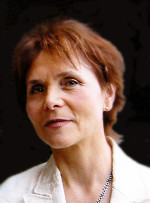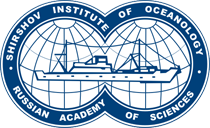
Chief Researcher
DSc (Geological and Mineralogical Sciences)
Lisitzin Laboratory of
physical and geological research
Marine Geology
36, Nakhimovskiy prospect, Moscow, 117997
Research directions:
- Study of geochemical processes of formation of bottom sediments, including the transformation of microelements in the water column, at the water-sediment interface, early diagenesis.
- Physical and chemical forms of finding elements in sedimentary material.
- Bioaccumulation and carbonate biomineralization of trace elements in oxidizing and reducing biotopes, including deep-water hydrothermal ecosystems.
- Indicator role of chemical elements in Late Quaternary bottom sediments of the Arctic basins.
In social networks of scientists and databases:
- ResearchGate
- РИНЦ SPIN-код: 3767-0120, AuthorID: 127704
- Scopus authorId=7003548152
In 1971, L.L. Demina graduated from the Faculty of Geology of Lomonosov Moscow State University with a degree in geochemistry and was assigned as a junior researcher to the Laboratory of Radiation and Chemical Ecology of the All-Union Scientific Research Institute of Fisheries and Oceanography (VNIRO).
In 1975, having two publications and experience of participation in the international intercalibration of methods for the analysis of heavy metals in the marine environment, she entered full-time postgraduate studies at the Shirshov Institute of Oceanology of the USSR Academy of Sciences. In 1978 she defended her Ph.D. thesis on the forms of migration of heavy metals in the early stages of oceanic sedimentogenesis. In 1982, she published a monograph on the topic of her dissertation at the Nauka publishing house. In 1987, L.L. Demina was transferred to the position of senior researcher.
In 1989, she began working as Scientific Secretary of the Shirshov Institute of Oceanology, Russian Academy of Sciences. In 1992, L.L. Demina was awarded the academic title of "senior researcher" in the specialty "oceanology". In 1995, she worked as a publishing project coordinator for the International Soros Education Program in the Exact Sciences (ISSEP). In 1996, she continued to work as a scientific secretary.
In the autumn of 2001, she returned to scientific work at the Laboratory of
physical and geological research. In 2010 she defended her doctoral dissertation on the topic "Biogenic migration of trace elements in the ocean" in the specialty "oceanology"; in 2014 she was transferred to the position of chief researcher.
L.L. Demina took part in nine ocean, sea and coastal sea expeditions of the Institute. She is a leading specialist in the field of geochemical migration and accumulation of elements in the processes of sedimentation, including the study of the forms of occurrence and bioaccumulation of trace elements. Author of about two hundred scientific articles in peer-reviewed domestic and foreign journals, eighteen chapters in books, two monographs.
Over the past five years, she has been managing editor of two monographs at SPRINGER. In 2010, L.L. Demina won the First Prize of MAIK-NAUKA-INTERPERIODIKA for a series of articles on the bioaccumulation of trace elements by benthic organisms in hydrothermal fields of the Mid-Atlantic Ridge and the East Pacific Rise, was awarded a grant in the RFBR project competition for the best popular science articles 2010, was repeatedly awarded the prizes of the Competition for the best scientific publications of the Institute.
In the period 2004-20018, she trained one candidate of science and about ten young specialists - graduates and undergraduates from Moscow State University, RUDN University, Mendeleev Russian University of Chemical Technology and the Polytechnic College; six of them remained to work at the Shirshov Institute of Oceanology RAS.
Main results
The processes of transformation of microelements on the geochemical river-sea barrier have been studied. It has been established that in the marginal biofilter recycling and accumulation (except for Fe and Mn) of microelements by biota occur.
The important role of living matter in the redistribution of trace elements in the ocean is shown. A direct relationship has been established between the duration of biocycles and the residence time of some heavy metals in the productive zone of the ocean. The high intensity of the biological cycles of phyto- and zooplankton contributes to a multiple (from 10 for Fe and Mn to 1000 times for Cu, Ni, Cd) acceleration of the geochemical migration of heavy metals in the ocean.
It has been shown for the first time that the biota of the deep-water hydrothermal of the Mid-Atlantic Ridge serves as a powerful local deep-sea biofilter: the accumulation of metals in the biomass of the dominant bottom communities is 102–103 times greater than in the marginal biofilter and the productive zone of the ocean.
A quantitative assessment was made of the contribution of various geochemical processes to the accumulation of chemical elements in sedimentary material (suspended matter, vertical flows) and bottom sediments. Some geochemical indicators have been identified in the cores of the North Atlantic bottom sediments, which make it possible to assess changes in the paleoenvironment of sedimentation during glacial cycles.



